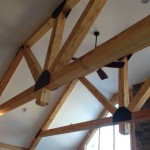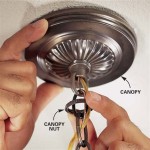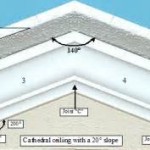Adding a coffered ceiling to your home is a great way to bring a sense of style and sophistication to your interior design. But in order to create the perfect look for your room, you’ll need to know the best techniques for painting a coffered ceiling. Here, we’ll discuss the basics of painting a coffered ceiling, from choosing the right colors and tools to the best techniques for creating a professional-looking finish.
Choosing a Color for Your Coffered Ceiling
When it comes to painting your coffered ceiling, the first step is to choose a color. The color you choose will depend on the overall style of your room. For example, if you want to create a traditional look, you may want to choose a neutral color such as white or cream. For a modern look, you can opt for a bolder color such as navy blue or red. Whatever color you choose, make sure it complements the other colors in the room.
Gathering the Right Tools and Materials
Once you’ve chosen a color for your coffered ceiling, it’s time to start gathering the right tools and materials. You’ll need a selection of paintbrushes, rollers, and a ladder in order to reach the higher parts of the ceiling. You’ll also need painter’s tape, drop cloths, and a primer. For best results, it’s recommended that you use a high-quality, low-VOC paint.
Preparing Your Ceiling for Painting
Before you start painting your coffered ceiling, you need to make sure that the surface is properly prepared. Start by wiping down the ceiling with a damp cloth to remove any dirt or dust. Then, use painter’s tape to cover any trim or molding that you don’t want to get paint on. Finally, apply a layer of primer to the ceiling, and allow it to dry completely before you start painting.
Painting Your Coffered Ceiling
Now that your ceiling is prepped, it’s time to start painting. Start by using a brush to paint the edges and corners of the ceiling. Then, use a roller to apply the paint to the rest of the ceiling. Make sure to use even strokes and to cover the entire surface. Allow the paint to dry completely before applying a second coat, if necessary.
Finishing Touches
Once the paint is dry, you can add some finishing touches to your coffered ceiling. If you want to add a bit of texture, you can use a stencil to create a pattern on the ceiling. You can also add some accent lighting to highlight the details of the ceiling. Finally, if you want to add some extra drama, you can use a metallic paint to create a shimmering effect.
Conclusion
Painting a coffered ceiling is a great way to add style and sophistication to any room. When done correctly, it can create a stunning visual effect. With the right preparation, tools, and materials, it’s easy to get professional-looking results. By following these tips, you’ll be sure to create a beautiful coffered ceiling that you can enjoy for years to come.















Related Posts








